Objectives Editor
The objectives editor is a very useful tool located inside Darkradiant (Version 0.9.7 or later) that allows the map author to set objectives or goals that the player must do in order to win the level. The opposite is also true, the author can set restrictions that the player must adhere to, or will fail the mission.
To access the objectives editor once inside Darkradiant, click the pull-down menu Map>Objectives...
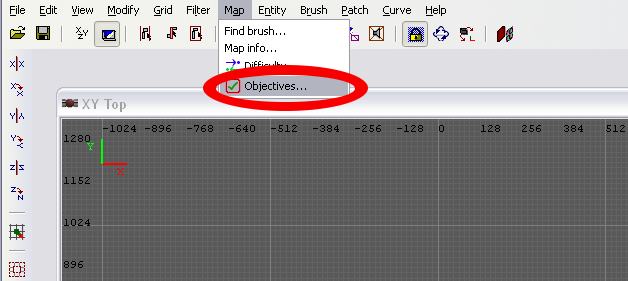
Upon clicking you will see a separate window that looks like this.
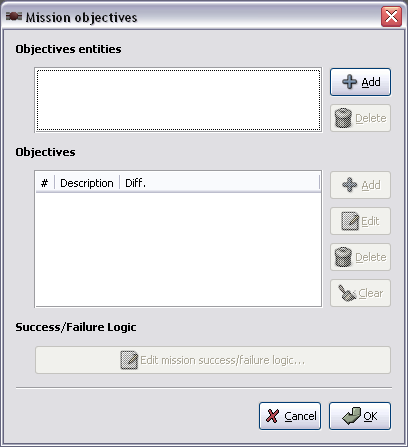
To start things off, click the
![]() Button
Button
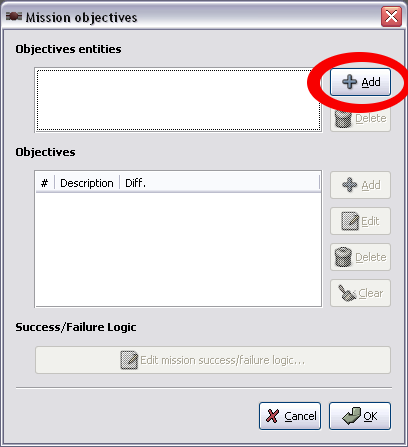
This will create an Entity that stores all of the objectives information that will you be editing.
Notice the numbers in the “[]”'s. Those are the entities' coordinates on the map. These numbers will most likely be different from yours. When the objectives entity spawns it is placed randomly around the origin (As of 0.9.7 this is how it is, it might change in future versions, but for now this is how it is).
*Note:Be mindful that sometimes this entity will spawn outside your map and into the void. This will cause a leak, so look around the origin.
Now we've spawned our objectives entity,
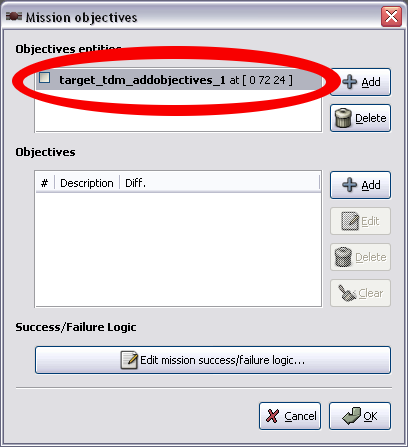 Now we're ready to start adding some objectives.
Now we're ready to start adding some objectives.
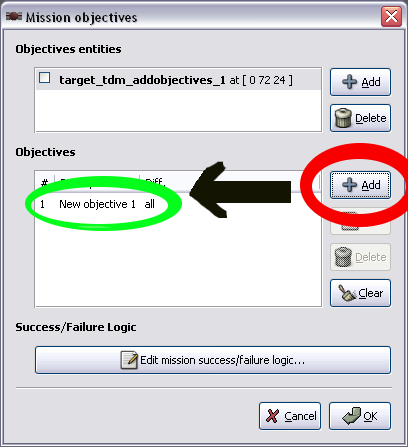 Under Objectives you'll notice theres a new Objective.
Under Objectives you'll notice theres a new Objective.
This will bring up another window. 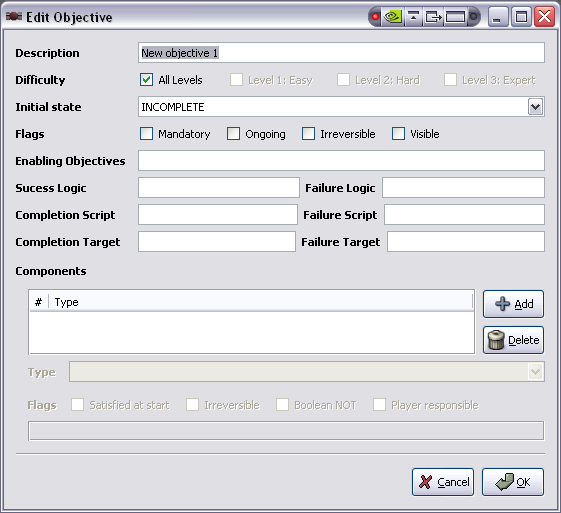
Now we're editing our first objective. It may seem a little confusing at a first glance but a lot of it is self explanitory and a little practice will take you a long way.
So what do all these various lines and checkboxes do? They effect the objective components at the bottom.
What do they all mean?
Description: This what the player will read in the objectives menu. For example: “Steal the scepter”, “Don't kill any guards”, “Get back to where you entered the warehouse”. Its explaining what you want to player read so he/she knows what to do. A good rule to follow is to make them short and to the point.
Difficulty:These refer to Easy/Medium/Hard difficulty levels. If the author wishes, they can be different for each difficulty. For example: on Hard difficulty the player will have to avoid being seen. On Easy the player will only have to steal 200 gold at the minimum. All Levels means that the objectives that are checked under this will be there regardless of difficulty.
Initial State:This is what the objective will be right from the start. There are four options. Complete, Incomplete, Invalid, Failed.
Flags:
Mandatory means the objective in question is necessary to complete the game. If it is unchecked than the objective will be optional.
Ongoing means that the objective won't show completion until the end of the mission. Irreversible means that once the objective is done, theres no change to it (could use more elaboration).
Visible means that objective will be visible in the objectives menu ingame. If unchecked than there will be no objective shown. (The objective will still work, it just won't show up in the menu).
*Tip: The "Visible" Box isn't checked by default yet, so try to get in the habit of checking it with each objective you want visible.
Enabling Objectives, Logic and Scripts: Under Construction
Components:These are used by the editor to specify what objectives need to be done. The map author can choose from a variety of options under Type with varying degrees of specification. For example: Knocking out an AI named "Roy". Not being seen by the ANY enemy. (less examples, should cover this in the coming up tutorial.)
Components Flags:Components have their own special flags as well.
Satisfied at Start:For some objectives it makes sense to have them done at start. For example: Not killing anyone.
Irreversible:One the objective has reached a certain state, it will stay that way and not change. (more elaboration, an example?)
Boolean NOT:Adds "NOT" to your component so the player has to do the opposite of said objective. For example: Do NOT kill any AI on team 2.
Player Responsible:The player MUST follow through with the objective himself. For example:The player must kill the zombie to complete the objective, instead of letting something else take care of it.
-Tutorial Coming soon-